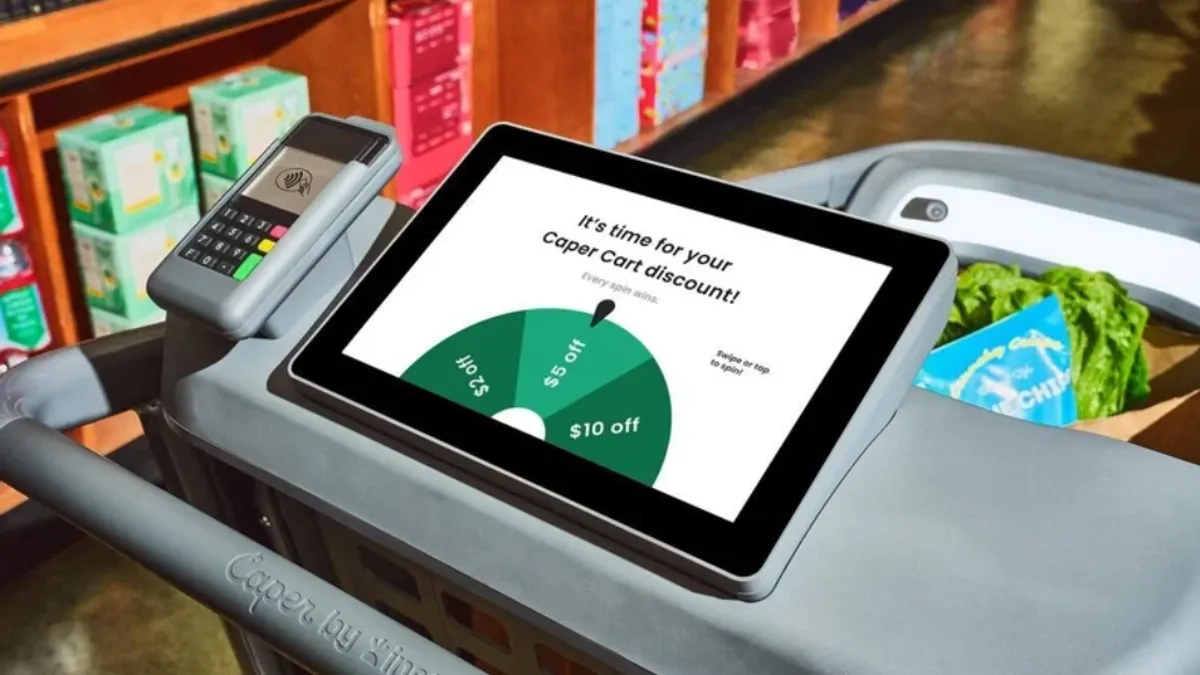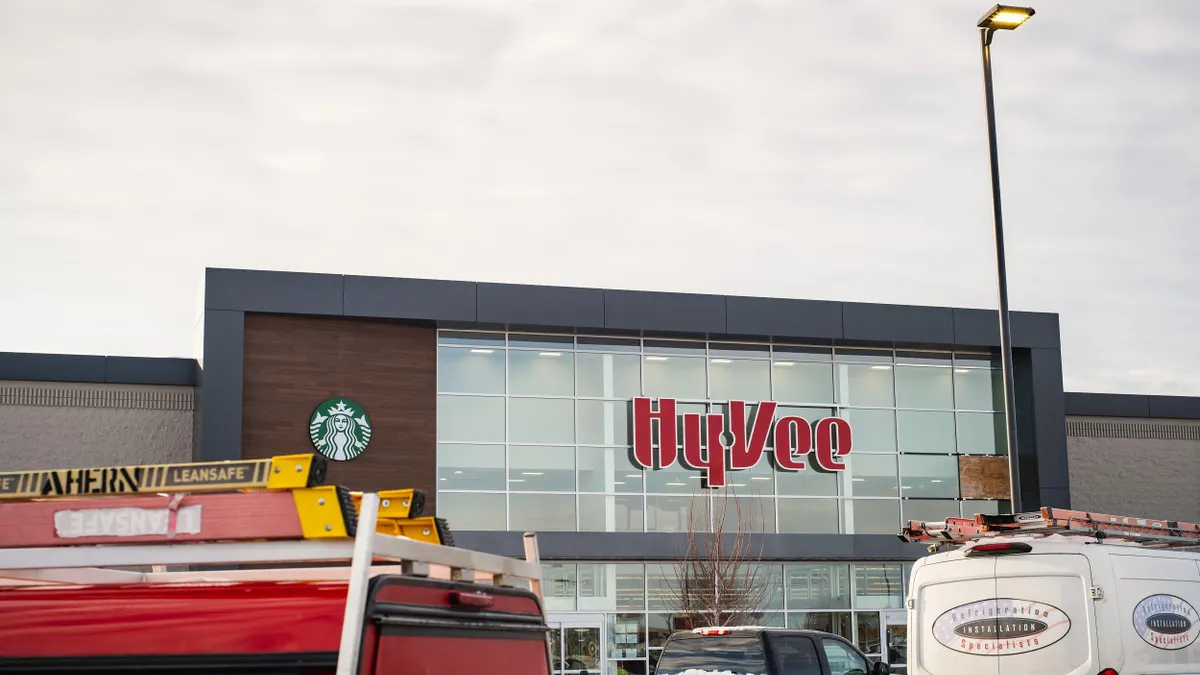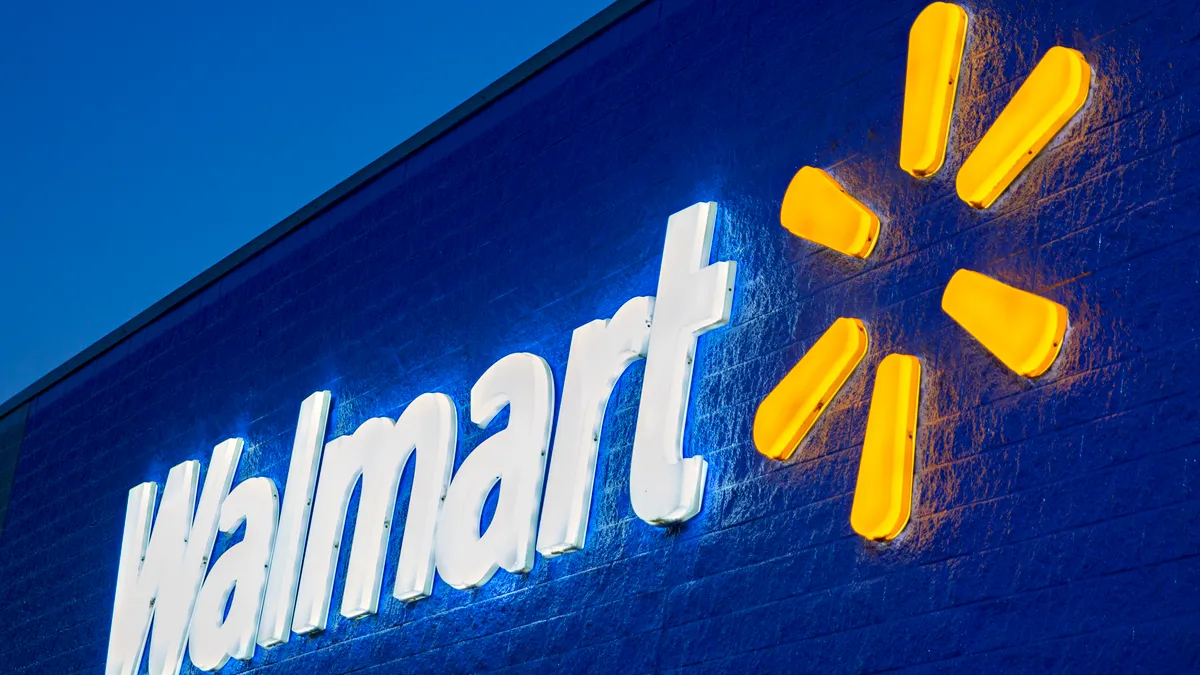This story is the third in a series looking at trends in the industry. Read about the top grocery markets and the 6 grocery trends to watch for 2020.
There are few elements of the grocery shopping experience as consequential as discovering new products. Customers bask in the joy of finding a new brand of chocolate, exploring a specialty food aisle or international cheese section. They are tempted to add something unique or interesting to their cart they might not otherwise try if they hadn’t stumbled upon it in the store.
Grocery e-commerce, on the other hand, lacks that sense of discovery, said Gary Hawkins, CEO of the Center for Advancing Retail and Technology. It’s an exercise in scrolling, searching and browsing until shoppers find the items on their list. It’s familiar and intuitive — but also uninspiring.
It’s also time-consuming, especially in those crucial first orders as shoppers learn the platform and build out their baskets, said Scott DeGraeve, chief operating officer and co-founder of e-commerce platform Locai Solutions and former executive with e-grocer Peapod.
Grocers need to do a much better job of helping online customers find relevant products faster and more easily, Hawkins said.
"There are a few [retailers] that are moving toward suggestive selling or trying to find the digital alternative to the impulse buy from people in the store, but the vast majority, no. They’re just transactional," Hawkins told Grocery Dive.
Moving the offline experience online
There are a few obstacles to a better e-commerce experience for grocers. For one, the massive quantity of SKUs has kept retailers focused on inventory management and recreating the familiar shop-by-department experience.
"I think what we have seen is when bigger companies and even new upstarts have thought about e-commerce grocery, it’s been effectively taking the offline experience and moving it online," Ben McKean, CEO of online grocer Hungryroot, told Grocery Dive. "What we believe is that the best companies … use the online relationship with the customer in ways that can enhance the experience."
Then there’s the issue of advertising and monetization, which is often mistaken for personalization. Hawkins said larger grocery retailers like Walmart, Albertsons and Kroger have turned to digital advertising in an attempt to generate revenue and offer personalized product recommendations. But it misses the mark.
"Effectively, they’re turning their online shopping platforms into an ad serving site and selling it back to the brand manufacturers,” Hawkins said. “Now, I’m not going to say that’s bad; where I have an issue with it is my belief is that the retailer should be focused on that customer. If I am a loyal Diet Coke buyer, I don’t want to see a Pepsi ad."
Research shows that consumers buy more when they buy online. But they aren’t buying very often, with just 4% of shoppers in a recent Gallup poll saying they buy groceries online at least once a week. According to consulting firm Brick Meets Click, purchase frequency among online grocery shoppers was flat between 2018 and 2019.
For grocers that don’t personalize their online shopping experience, add more services and altogether make it easier and more compelling, online grocery will weigh down the bottom line instead of boosting engagement and sales.
"The threat to retailers is changing shopper expectations," Hawkins said.
Some grocers seem to be getting this message and are refreshing their digital platforms. The Fresh Market recently updated its ordering site and app with new filters and search options based on dietary preferences, meal occasions and more. Wegmans also updated its digital storefront this month with more personalized search results and integrated digital coupons — though the launch hasn’t gone as smoothly as the company had hoped.
"When bigger companies and even new upstarts have thought about e-commerce grocery, it’s been effectively taking the offline experience and moving it online."

Ben McKean
CEO, HungryRoot
In November, ShopRite launched a pilot with CookIt, a service from Locai that provides personalized recipes and ingredient recommendations to shoppers based on the items in their cart.
The service keeps shoppers on ShopRite’s e-commerce site for longer, said DeGraeve, and offers relevant ideas and products based on what they’re already shopping for.
According to DeGraeve, there are several metrics that groceries are always trying to improve in their e-commerce business: basket size, frequency and retention. Because CookIt personalizes the shopping trip with one-click convenience, "we are seeing basket size lift of $20 from those using the CookIt module," he said.
DeGraeve said that while many retailers have recipe pages on their sites, they tend to have low engagement because they are not personalized.
"Consumers are shopping online for convenience, but they also want to be inspired," he said.
Two online grocers with discovery at their core
Hawkins sees newer companies and startups that have digital discovery at their core as a threat to traditional retailers. They're also potential sources for inspiration.
"They are feeding those changed consumer expectations that the world is all about me,” Hawkins said. “They’re catering to that, and that’s powerful."
Thrive Market is now six months into a new personalization tactic that delivers a unique subset of product recommendations to customers. The online natural grocer implemented a quiz for shoppers to take when they first arrive at Thrive’s website, which allows the grocer to better understand their food preferences and needs.
More than 85% of people who start the quiz complete it, Thrive co-founder and chief technology officer Sasha Siddhartha told Grocery Dive. Using the data gathered from the shopper quiz, Thrive can then offer a more personalized shopping experience for each individual that helps them discover products that fit their needs.
Siddhartha said Thrive’s average users add 12 to 15 items to their cart across a broad range of categories and a catalog of more than 6,000 products. The tailored product assortment the grocer displays based on shopper profiles helps create a "personalized aisle" they can engage with.
"Then, over time, we want to be able to broaden people’s horizons in terms of the kinds of products they’re buying on our platform," he said.
Guiding customers toward new products that are relevant to them has paid off for Thrive.
"We see double-digit gains across the board when it comes to membership signup rates, order placement, and also improving long-term engagement," Siddhartha said.
Hungryroot, a direct-to-consumer grocer that serves the continental U.S., has had personalization at the center of its operations since it launched four years ago. The company began with a handful of Hungryroot private label products and has since expanded to include items from Beyond Meat, Banza and other emerging food brands. The service now offers close to 100 different food products.
The SKUs are limited, but McKean told Grocery Dive the curated assortment encourages shoppers discover products they wouldn’t have otherwise found.
"It’s sort of designed for discovery," McKean said. "Designed for giving customers healthy, exciting foods they’re going to love but that they might not otherwise really know to pick out."
When shoppers visit Hungryroot for the first time, they share information about what kinds of foods they like, what dietary preferences they have and what their objective is when shopping. From there, the company sets up a weekly delivery for each customer using the information provided.
The customer doesn’t have to make any of their own selections, but if someone does want to swap out any products, they can. McKean said the majority of shoppers keep what Hungryroot recommends.
The approach seems to be paying off. McKean said the company saw $30 million in sales in 2018 and has strong customer retention.
What can grocers do to improve?
While the data is there for grocers to provide a more discovery-based online shopping platform, Hawkins said few retailers are leveraging that data.
"Many times, it’s because one, they aren’t thinking about it, or they’re not aware that the data is out there, or this is more common, their systems can’t accommodate all that data," Hawkins said.
But retailers still have an opportunity to tap into consumer discovery and develop "e-commerce 2.0," according to Hawkins. He said he’s seeing several regional grocers, in particular, stepping back and evaluating what they need to do next.
"They are beginning to ask questions, they are beginning to create their vision around what comes next. I think discoverability is a key part of that," Hawkins said.
DeGraeve said artificial intelligence brings a new level of personalization that can help grocers move from static e-commerce to something dynamic for the shopper. There's been a "deluge of innovation" in AI over the past few years, said Bill Bishop, co-founder and chief architect at Brick Meets Click, and grocers are starting to wrap their arms around the technology's ability to forecast demand broadly and for individual customers.
The key, however, isn’t just going out and finding the expensive tools to improve online shopping for customers, Hawkins notes. Retailers need the intelligence and data to pair with the technology, or they won’t be effective.
"The world and tech is moving incredibly fast. New competitors, young companies are getting into the game here. Traditional retailers have got to get moving," Hawkins said.





















